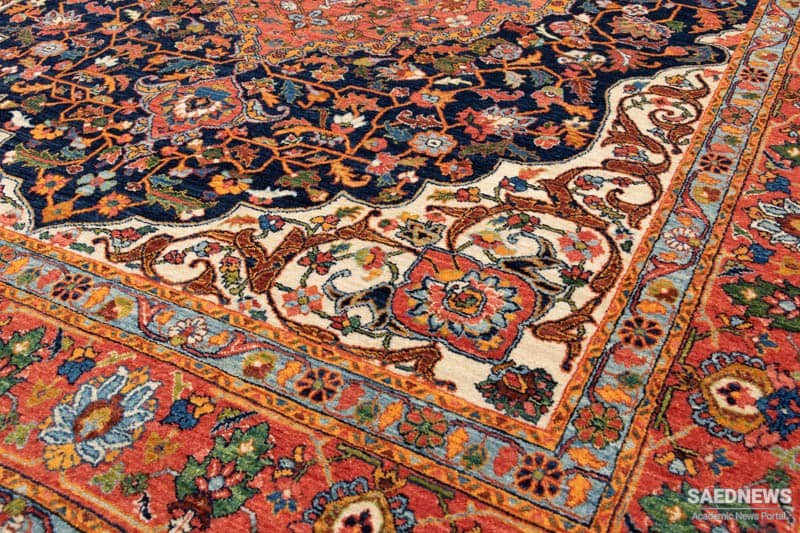Investigating texture and images of the oldest carpet in the world, i.e. the Pazyryk carpet, suggests that the carpet motifs is considerably similar to the reliefs in Persepolis, and many researchers consider this carpet as a Persian carpet woven by people of Median-Parthian territories or Persia (Greater Khorasan). Baharestan Carpet, dating back to the Sassanid period which is also known and associated with Bahar Khosrow and Bahar Kasra names, is well known as another symbol of evolution in carpet weaving and the peripheral industries such as design and dyeing in ancient Iran, and was fragmented and destroyed being transmitted to Medina after the Arab invasion of Iran.
At the domination of the Mongols (thirteenth or fourteenth centuries CE) which coincided with the reign of Ghazan Khan, the industry reached a very high level in terms of style and technique. However, the most apparent excellence of Iranian classic art of carpet weaving, which is also referred to as the renaissance of Persian rug, is believed to have taken place in the reign of Safavid Shahs especially Shah Tahmaseb and Shah Abbas. In that period, medallion carpets replaced the carpets which were then known as having Mongolian and Timurid designs, and besides the medallion carpets, weaving carpets with images of animals or hunting grounds in their patterns became popular.
Today, there are around 3000 carpets remained from this period, and are kept in the world’s greatest museums or personal collections. Overall, motifs and pattern of the carpets represent how the craftsmen or artists view the environment, climate and the nature around; and, motifs and patterns of handmade carpets sometimes convey a message representing the current culture, history, architecture, climate, and the time of weaving.
Also, the geometrical patterns of Iranian carpet, sometimes implies a verse of poetry, a verse or sura of Quran, a legendary or historical tale, or a hadith from the prophets.
According to some carpet experts and designers, carpet patterns or textures can be divided into two styles quite distinct from each other: the rural style (broken or geometric patterns) and urban style (curved or revolving patterns); in some patterns these two styles are combined leading to an almost compound style called as revolving-broken pattern.
At the present time as well, the most important industrial product of Iran is handmade or hand-woven carpet and rugs, and the major centers of carpet weaving in Iran are the cities of Tabriz, Isfahan, Kashan, Kerman and Mashhad.


 Bibi Shahr Banu Shrine
Bibi Shahr Banu Shrine














































